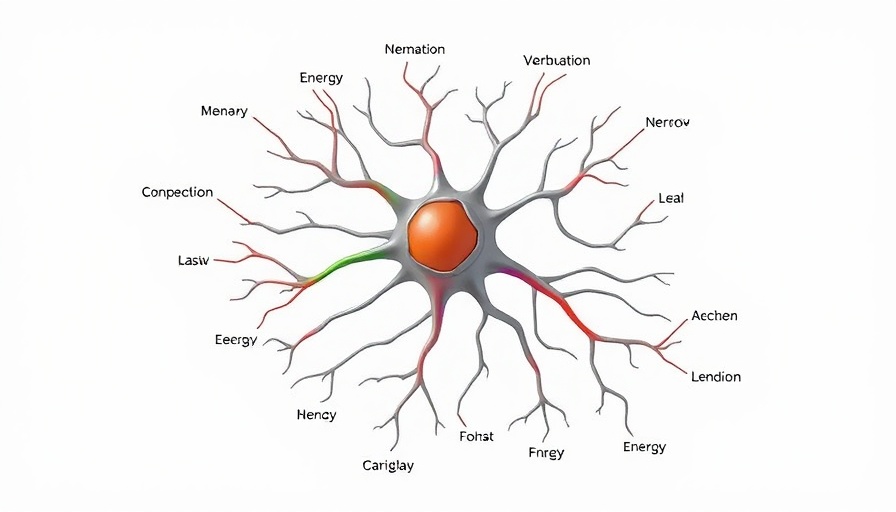
Understanding the Brain's Role in Energy Regulation
Research from the Pennington Biomedical Research Center has illuminated the intricate neural mechanisms behind our body's energy regulation and thermoregulation. The study highlights specifically how neurons in a section of the brain known as the dorsomedial hypothalamus (DMH) impact metabolism. For years, scientists have known about leptin, a hormone that helps to control weight by signaling the brain when to eat. However, new findings by Dr. Heike Münzberg-Gruening's team dive deeper, revealing the distinct pathways and neuronal actions involved in how we manage energy levels and body temperature.
Decoding Neuronal Communication: The Pathways Unraveled
The research details fascinating pathways where leptin receptor (Lepr) neurons utilize different chemicals to communicate. The DMH neurons communicate through glutamate and GABA; glutamate is generally an excitatory signal, while GABA acts to calm neuronal activity. This dual signaling mechanism enables the brain to finely tune energy balance and helps it adapt to environmental changes, such as fluctuations in temperature.
The Implications for Weight Loss and Health
One significant finding from this study is that certain neurons that respond solely to glutamate connect with the raphe pallidus, a region that plays a critical role in metabolic regulation. Meanwhile, other neurons that communicate with the arcuate nucleus, which influences satiety and body weight, use GABA. This differentiation could have profound implications for developing targeted weight loss treatments, especially with the advent of new medications like GLP-1 receptor agonists. These treatments harness the body’s existing mechanisms but have the added advantage of optimizing neuronal responses for better metabolic outcomes.
Future Directions in Metabolic Research
The findings from this study pave the path for future research into how dietary habits and environmental factors influence these neuronal pathways. The interplay between energy use and environmental variables like food availability holds immense potential for uncovering therapeutic strategies aimed at combating obesity and metabolic disorders. Such advancements could benefit not just individual health but community health and wellness at large.
Community Connections: Health and Wellness in Practice
The revelation of how brain mechanisms control energy resilience underscores the importance of comprehensive health and wellness practices. For residents of communities like San Antonio, understanding these findings could urge individuals to consider a more holistic approach to weight management and overall health, employing natural remedies and lifestyle adjustments as part of their wellness journey.
Integrating New Knowledge into Daily Lifestyle Choices
Armed with insights from this research, individuals can foster their well-being by adopting practices aligned with their biological makeup. This includes maintaining optimal health through balanced diets rich in nutrients, engaging in physical activity, and exploring natural therapies such as naturopathy that can complement their body’s regulatory mechanisms.
Conclusion: The Next Steps Towards Optimal Wellness
The recent discoveries regarding neuronal interactions invite a shift in how we perceive metabolism and weight management. By harmonizing our lifestyles with these biological findings, we can maximize our health potential. For those interested in improving their well-being, it’s crucial to explore community health and wellness offerings that concentrate not only on physical health but also on how to enhance energy levels and adapt to environmental changes. Explore local health and wellness events and consider integrating complementary medicine approaches to support your journey.
 Add Row
Add Row  Add
Add 




 Add Row
Add Row  Add
Add 


Write A Comment